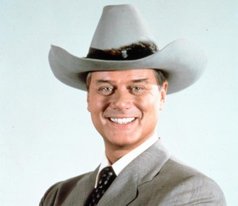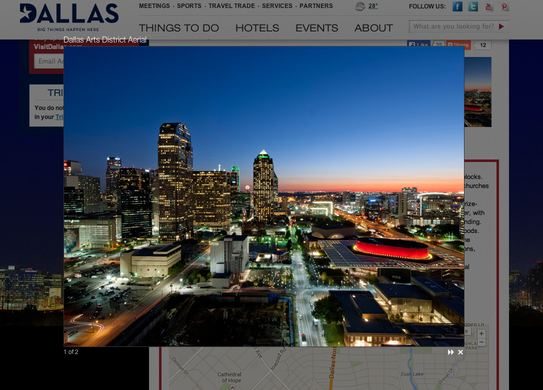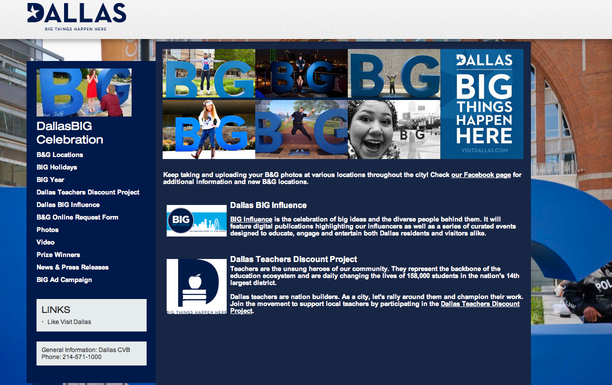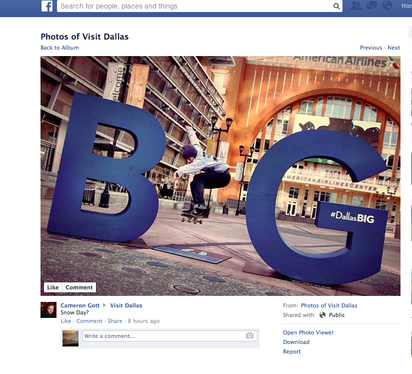When Dallas shook stereotypes and stretched its marketing dollar with SoLoMo
Think of ‘Dallas’ and many will recall images of JR Ewing and JFK, but a one year-old marketing campaign has shifted perspectives, writes Pamela Whitby
When it comes to destination marketing budgets, not all cities are created equal. Take Las Vegas, for example – it has a substantial $190 million to play with. Until very recently Dallas, on the other hand, which like Las Vegas is also on the meeting and conventions trail, had marketing spend of a mere $1 million. Luckily though, in early 2013, the Dallas Tourism Public Improvement District (TPID) stepped in to give the city a $3.5 million boost. While still nowhere near Vegas levels, according to Noelle Le Veaux, Chief Marketing Officerfor the Dallas Convention & Visitors Bureau (DCVB), having marketing spend of around $4.5 million has given the city the impetus, and traction, to help build a brand that residents can be proud of.

Nearly a year on, and the city’s destination marketing organisation has seen :
· a 550% increase in Facebook page visits between March and November
· 2.4 million website visits (that’s up 67%)
· Twitter followers double
The success to date has been achieved by:
1. Shaking negative stereotypes
All cities will have their own issues to address, but for Dallas a major challenge was shaking dated, and potentially negative, stereotypes. “We found that we have been branded by what happened to us in the past, and not what we are ‘authentically’ about,” says Le Veaux. She is referring, of course, to Dallas, the television programme that premiered in 1978 and still airs around the world, and the assassination of John F Kennedy. However, as Le Veaux points out, the city of that time could not be any different from the Dallas of today. “Dallas has changed dramatically and there is a saying that goes ‘if you haven’t been to Dallas in the last five years, then you haven’t been to Dallas’,” she says.
Consider this: in the 90s, 400 people lived between what is known as ‘uptown’ and ‘downtown’ Dallas but today there are 400,000 people living in that area. In the past few years alone there has been $15bn of investment into the city resulting in the development of the largest urban arts district in one contiguous area in the US, a 5.2 acre deck park linking the two city areas and more. “Many people, including Dallas’s huge suburban population, were not aware of these changes,” explains Le Veaux.

2. Engaging locals as brand ambassadors
One of the first steps for a destination marketer is to engage local residents as brand ambassadors. This was easier said than done in Dallas as initial research showed that many people – both locally and in other markets - were neutral about the city. “People just didn’t know what Dallas had to offer and neither loved it, nor hated it,” says Le Veaux. In other words, there was no real emotional tie to the city – and travel is a very emotive thing. As the DMO started to think about how to rebrand Dallas, it understood that whatever it created it had to be accepted, adopted and loved by people who live in the city. “Nine times out times out of ten, if somebody is thinking of travelling to a city and they know somebody in the area, they will pick up the phone, shoot an email or go on Facebook to validate the trip. But in many cases, the response of Dallas locals was: ‘Why would you come to Dallas. There is nothing to do’. We realised that had to change.
3. Doing research and thinking ‘big’

Since 2004, Dallas’s tag line had been ‘Live large. Think big’ but it soon became clear that this no longer resonated with citizens. “In 2009 we were going through a recession, people had lost their jobs, and so that wasn’t an image that worked well at all,” says Le Veaux. According to Le Veaux, any serious marketing campaign must start with research, and the good news is that the internet “really allows you to listen in to different conversations”. The first step was a series of focus groups. While people may not see Dallas as a leisure destination, it is top of mind when it comes to meetings and conventions. So the DMO started with a series of focus groups with meeting planners for their perspective. It also partnered with DSW Airport in surveys and interviews to help understand visitor perceptions of the city. A lot of research followed, alongside the development of several different taglines. “In a lot of places, Dallas is known as ‘big D’ and has a reputation for being a bit cocky, so for a while there was some debate around the negative connotations of using the word ‘big’,” explains Le Veaux. However, in the course of research the city established that ‘big’ is still something that resonates with locals. “We are still seeing extreme growth, there are cranes in the air, there are big things happening here,” she says. And so the tag line: ‘Big things happen here’ tested well in focus groups both with locals and potential visitors and it stuck.
4. Developing an integrated public engagement campaign with SoLoMo at the centre
The new brand, which included a new look and constantly changing website, was launched in late march of 2013. “A huge part of what we did was to create a public engagement campaign,” says Le Veaux. This involved the construction of 26 six-foot tall ‘B’s and ‘G’s, which were then installed in venues and destinations all around the city. The idea was that residents or visitors would stand stand in the middle to become the ‘i’ in BiG. Dallas’s DMO then created a range of different contests and activities around the letters; for example, being the first person to post a picture on Instagram standing between a particular B and G would win a prize. According to Le Veaux, this campaign has been “hugely successful” and truly plays into the opportunities that SoLoMo can deliver. Doing a campaign in a market like Chicago or Washington DC, even for two months, can cost as much as a million dollars. That’s why the public engagement piece was so important; after taking pictures of themselves, family or friends between the Bs and Gs around the city, locals would then put them on Facebook, Instagram or Twitter.

“We used our residents to give us greater reach, a reach I could never buy,” says Le Veaux, who is a strong believer in the role of social media, particularly in a place like Dallas which has a youthful population. “Dallas is still a number one destination for people to move to, so often residents’ networks are not just in this market and they can quickly become brand ambassadors in the digital space,” she explains.
5. Measuring success and more research
While, the ‘BiG’ letter campaign resulted in predominantly local engagement, funding from TPID was also used to drive a digital campaign at regional, national and international levels. As an integrated campaign the budget is roughly split between outdoor (35%), digital, which “everybody loves because it’s measurable” (35%) and to a lesser extent print/drive time radio (30%). Three months after doing a campaign in a particular market, Dallas does research. “So in Chicago, for example, we tested to see who was exposed to the adverts, what they recalled and how the adverts performed based on set goals and objectives,” explains Le Veaux. “The results were good. By exposing people to those ads in Chicago, we did see a lift in their understanding that there were many different experiences they could have in Dallas and they were more likely to visit or recommend the city,” says Le Veaux.
Research also helps to inform future adverts. For example, they found that many people were still sceptical about the fact that Dallas is a great place to visit for arts and culture.
6. Recognising weak spots
What Le Veaux is quick to point out, is that the website is “a living mechanism” and that adverts must drive people to the right landing pages. On this front there is more work to be done. The main reason people come to the site is to plan a trip to Dallas, and there is a real need for better solutions on this front. “A lot of destinations have these very low-level, simplistic itinerary planners and these need to be more robust,” says Le Veaux who is currently looking at a solution that will deliver a more customised, personal and even suggestive experience. On the meeting planner front, the DMO has also identified a weak spot. “Dallas is very much top of mind on the meeting planner radar but we found that our ads were just not performing that well,” explains Le Veaux. So the city has adapted its meeting planner marketing spend to do case studies, present trending information from well known professional associations and position itself as a thought leader. “We want Dallas to be a destination on the cutting edge that is able to take the [meeting planning and convention] industry into the next century,” she concludes.
To hear more about Dallas’s public engagement campaign from Noelle Le Veaux,Chief Marketing Officerfor the Dallas Convention & Visitors Bureau (DCVB) join us in Miami for Online Marketing Strategies for Travel 2014: The Americas and Carribean (June 2-3)

